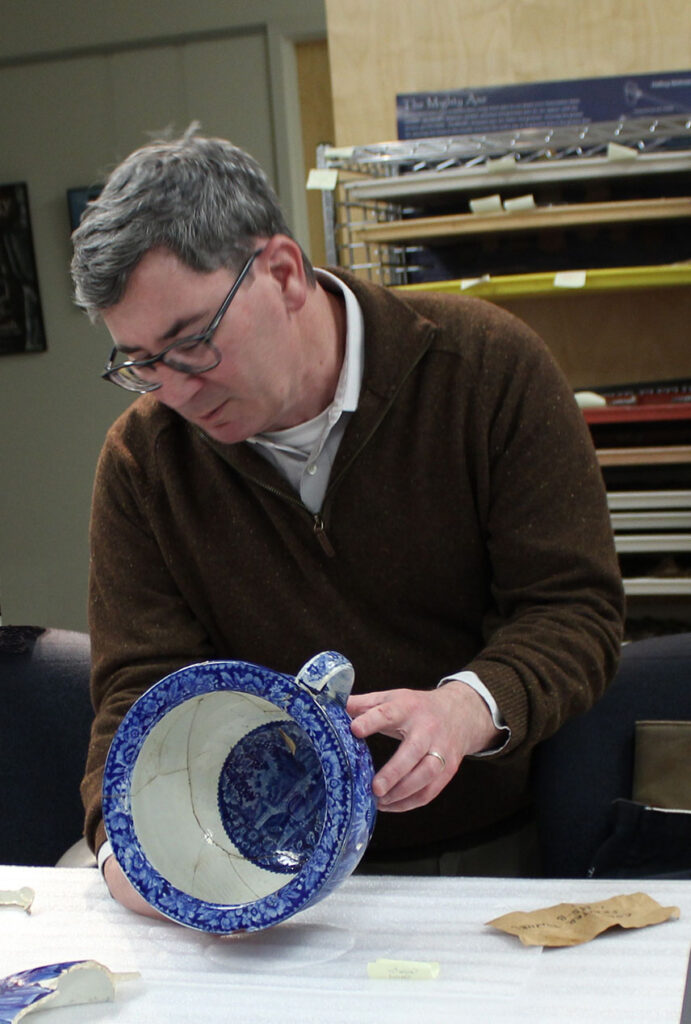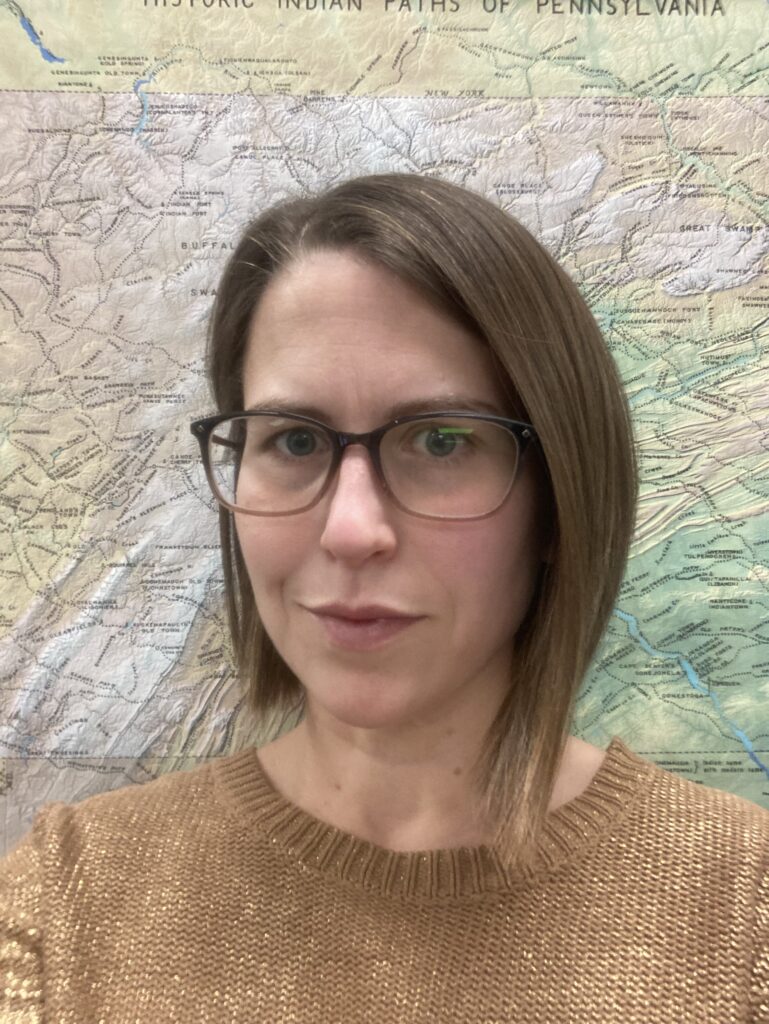
Virtual Learn at Lunchtime: Archaeology
Fridays in October 2024
This series has concluded. Each presentation was recorded and is available on PHMC’s YouTube Chanel. Please click the titles to access the recordings.
Presentations begin at 12:15 PM and last approximately 20 minutes followed by a question-and-answer session.
Registration is required to attend the free, virtual program. Click the dates below to register for each program you are interested in.
Friday, October 4 Ron Fuchs, Editor Ceramics in America

“The Nation’s Guest and Our Country’s Glory”: Lafayette on Ceramics from Philadelphia
In 1824, the Marquis de Lafayette, French hero of the American Revolution, returned to the United States for a tour of the nation that he helped create. This presentation will examine how Americans commemorated and celebrated Lafayette with English transfer-printed earthenwares decorated with his portrait, his home in France, and key moments of his visit that were excavated in Philadelphia.
Ron Fuchs II is the editor of Ceramics in America and has served as a curator of ceramics for more than 20 years, first at the Winterthur Museum and then at the Reeves Museum of Ceramics at Washington and Lee University. He specializes in Chinese and Japanese export porcelain and English ceramics made for the American market. He lives in Gettysburg.
Friday, October 11 Dr. Jonathan A. Burns, Director of the Cultural Resource Institute and Professor of Archaeology at Juniata College

Training the Next Generation of Preservationists by Processing Colonial Artifact Collections
Archaeological excavations at colonial fortifications like Fort Halifax and Fort Shirley tend to produce a rich array of material culture, providing diagnostic details that enrich our understanding of the French and Indian War in Pennsylvania. For historical archaeologists, documentation of military campaigns and commerce provides the historic threads upon which tapestries of archaeological interpretation of material culture may be affixed. Studying the artifacts like buttons, buckles, and lead ammunition from these sites provides a glimpse of the roots of globalization and the distribution of European material goods into the North American colonial frontier. Many of the collections derived from Juniata College archaeological field schools are destined to be curated in the Pennsylvania State Museum; but, not before college students receive valuable training while fostering the collections through collection processing. For every hour spent in the field, archaeologists work an additional four hours in the laboratory—identifying, classifying, and preserving the finds. Providing training, while involving undergraduate students in the process, helps them become better stewards of the past, and even sets some on a career pathway in historic preservation.
Specializing in conflict archaeology, Jonathan Burns has been with Juniata College for fourteen years, teaching anthropology courses and conducting archaeological field schools in Pennsylvania. He is the Director of the Cultural Resource Institute (CRI), a research platform for historic preservation projects and student training. In this capacity, he oversees artifact processing and curation in the CRI laboratory on campus. Since 2017, Jonathan has headed the Veterans Archaeology Program—a grassroots initiative that offers continuing education to U.S. military veterans.
Friday, October 18 Melanie Mayhew, Curator – Section of Archaeology The State Museum of PA

Where There’s a Weir, There’s a Way: Stone Fish Weirs in Pennsylvania’s Waterways
More than 350 V-shaped stone fishing structures, or fish weirs, have been identified in Pennsylvania’s waterways. These rivers and streams supported a large fishing industry prior to the construction of hydroelectric dams during the 20th century. This presentation will focus on the identification of weirs in Pennsylvania using remotely sensed imagery and historic documentation.
Melanie Mayhew is an archaeology curator at The State Museum of Pennsylvania where she assists in the care of collections representing more than 16,000 years of Pennsylvania’s past. Her professional focus is to increase awareness, understanding, and interest in Pennsylvania’s past and its role as a cultural crossroads.
Friday, October 25 Paul M. Nasca, Historic Site Manager – Lorenzo State Historic Site, Cazenovia, NY

Keystone Collections: Curating Pennsylvania’s Ceramic Past
With 11.5 million artifacts, the Section of Archaeology at The State Museum of Pennsylvania curates a rich record of ceramics that people produced, imported, and used in the Commonwealth. This presentation delves into these archaeological collections to highlight outstanding examples and the near limitless potential for ceramic research, study, and multidisciplinary collaboration.
Paul M. Nasca is a historical archaeologist and curator with a particular interest in early American stoneware production in the Northeast and Mid-Atlantic.
Presented in association with Pennsylvania Archaeological Council.
Past Recordings
- Workshops in Archaeology 2021 & 2020
- Deadly Contact: Europeans, Native Americans, and Pandemics
- Archaeology at Fort Hunter
- Chevaux-de-frise
- Archaeological Discoveries as a result of Tropical Storm Agnes
- Archaeological Collections
- Historical Archaeology and the Search for the Early Philadelphia Potter, Branch Green
- Historical Archaeology and the Search for the Early Philadelphia Potter, Branch Green
